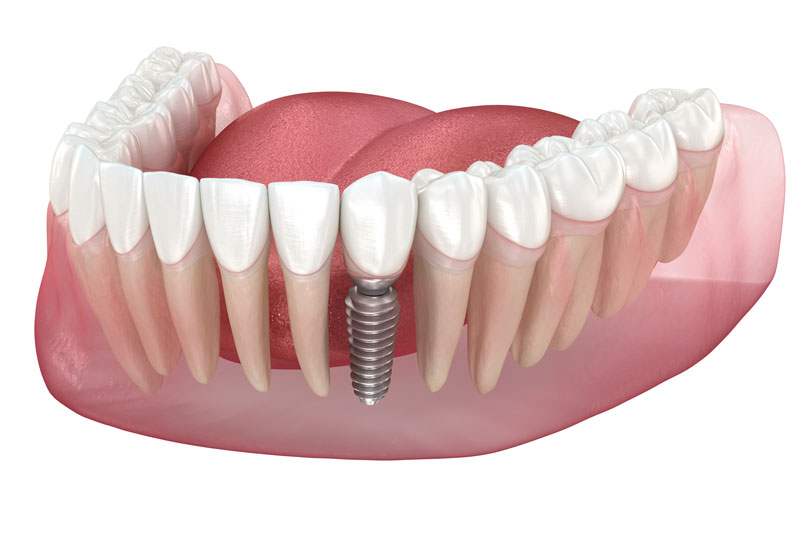blog - [City], [state]
Tips, Facts, And The
Latest In Dentistry

What To Expect During An Implant Placement Procedure
Posted in Dental Implants

An implant placement procedure is a surgical step to put a dental implant (a titanium post) into your jaw to replace a missing tooth root. It’s for people with one or more missing teeth who want a long-term, natural-feeling replacement. This post will walk you through what happens before, during, and after an implant placement procedure, how comfortable it is, typical recovery, and how to choose the right provider.
What happens before an implant placement procedure
Consultation and medical history
Your first visit is a consultation. The dentist or oral surgeon will examine your mouth, review X-rays, and ask about your medical history. They’ll ask about medications, allergies, diabetes, heart conditions, and smoking. These details matter because they affect healing and the risk of complications during your implant placement procedure.
Imaging and treatment planning
Imaging such as X-rays or a CBCT (3D) scan measures bone height and density. That helps the team plan exactly where to place the implant and whether bone grafting is needed. A good treatment plan shows implant size, angle, and whether you’ll get a temporary crown right away or wait for healing.
Pre-op instructions
Before the procedure you’ll get clear instructions. Common directions include:
- If you’ll have sedation, don’t eat or drink for a specific time before the appointment.
- Stop or adjust certain medications if advised (your provider will tell you which ones).
- Arrange a ride home if using oral or IV sedation.
Step-by-step: the implant placement procedure itself
Anesthesia and comfort options
An implant placement procedure can be done under local anesthesia, oral sedatives, or IV sedation. Local anesthesia numbs only the area — you stay awake and feel pressure but no pain. Oral sedatives make you drowsy and relaxed. IV sedation keeps you deeply relaxed and often unaware of the procedure. Your provider will explain options and help you choose one that fits your needs and medical history.
Surgical steps
Most implant placements follow the same basic steps:
- Incision: A small incision is made in the gum to expose the jawbone.
- Drilling sequence: The surgeon uses a series of drills to create a precise hole in the bone.
- Placement: The implant is screwed or tapped into place at the planned angle and depth.
- Healing cap or temporary: A healing cap (or temporary restoration) is attached to shape the gum and protect the implant.
- Suturing: The gum is sutured closed and immediate checks are done to confirm stability.
How long it takes and what you’ll feel
Most single implant placements take 30 to 90 minutes. Multiple implants take longer. With proper anesthesia you should feel no pain during the procedure — mainly pressure and movement. Right after the surgery you may feel numbness until the local wears off and mild soreness as anesthesia fades.
Recovery and what to expect after an implant placement procedure
Pain, swelling, and managing symptoms
Mild to moderate pain and swelling are common for the first 48–72 hours after an implant placement procedure. Your provider will recommend over-the-counter pain relievers or prescribe stronger medication if needed. Use ice packs on the cheek for the first 24 hours and rinse gently with warm salt water after 24 hours to help healing.
Eating, activity, and oral hygiene
Stick to soft foods for several days and avoid chewing directly on the new implant. Avoid heavy exercise for 48–72 hours to reduce bleeding and swelling. Maintain oral hygiene with gentle brushing and use any prescribed antimicrobial rinse. Do not use straws or smoke, as these can disrupt healing after an implant placement procedure.
Follow-up care and osseointegration timeline
You’ll return for follow-up visits to check healing and remove sutures if needed. Osseointegration — when bone bonds to the implant — usually takes 3 to 6 months. After successful integration, your provider will place the final abutment and crown or attach your permanent restoration.
Choosing a provider for your implant placement procedure
What to look for
Choose a provider with proven implant experience, surgical training, and access to modern technology like CBCT imaging and guided surgery. Ask whether they offer sedation options and how often they place implants. Experience lowers the risk of complications and improves outcomes for your implant placement procedure.
Questions to ask at your consultation
Bring questions to your consultation, such as:
- What is your success rate with implants?
- What are possible complications and how are they handled?
- Do you use CBCT scans or guided surgical planning?
- What does aftercare include and what are the costs/financing options?
If you’re considering an implant placement procedure, our practice has experience placing implants and guiding patients through each step. Call to schedule a consultation and get a personalized treatment plan for restoring your smile.





